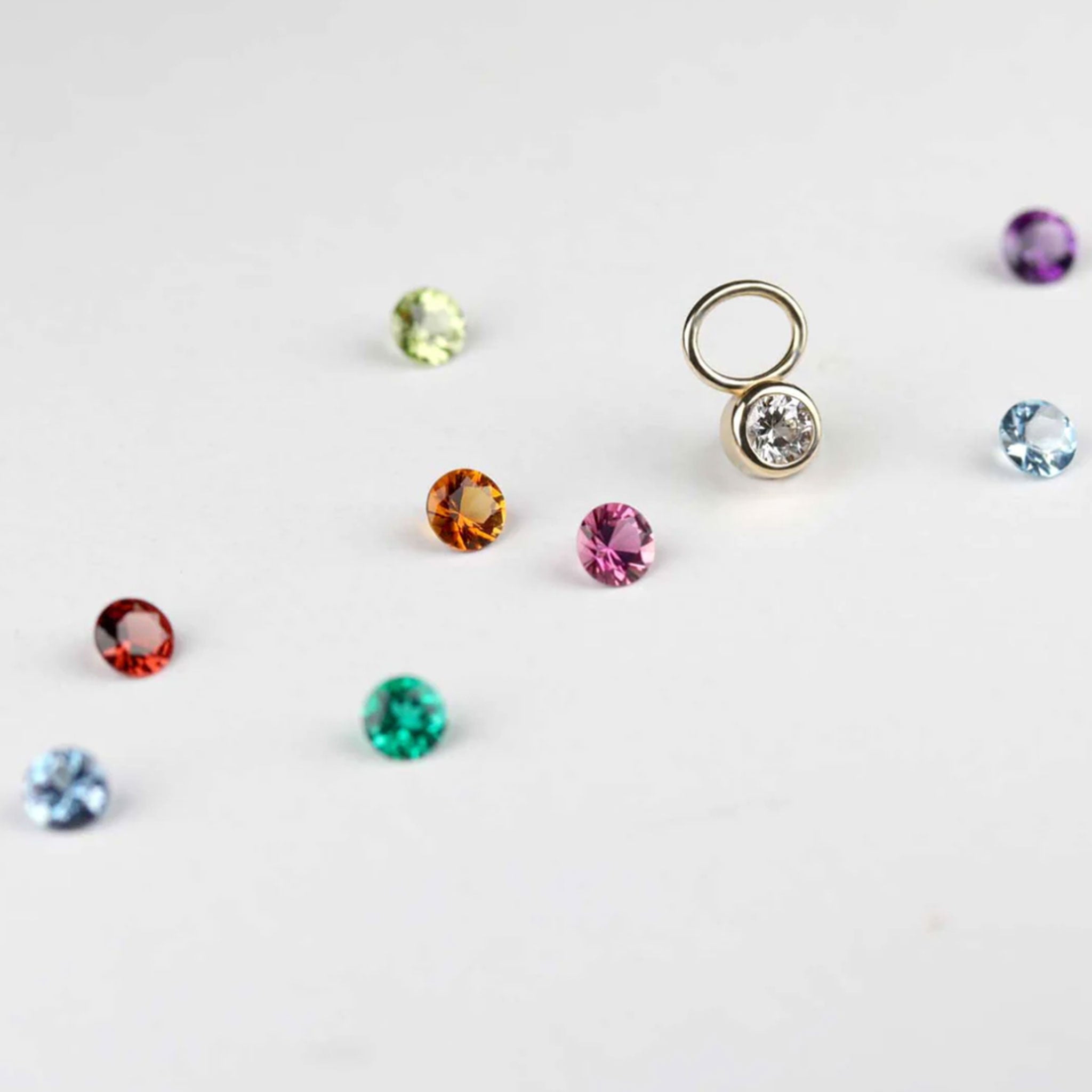3 Reasons Why We Do Things Differently
Happy 2023 everyone. This month, I sat down with Aide-mémoire founder, Aran Galligan, for a Q&A on what sets us apart from mainstream jewelry stores. I learned so much from Aran and hope you do too!

MK: When did Aide-mémoire officially open?
AG: We officially opened our doors in December of 2012. My first sale was an 8x1mm flat band without stones. At the beginning of the business I didn’t want to work with diamonds at all. Actually, when I was in undergrad learning to be a metalsmith, I had a professor who constantly told me “you need to work with diamonds.” My professor was coming from a place of, well that’s how the industry works, and if you want to make a living at this then …
______________________________________________________________

MK: At what point did you decide to start making jewelry with gemstones?
AG: Because I struggled with the whole diamond thing I was always like no, I’m not gonna work with diamonds. In an act of rebellion, I would always use glass in my university work.
But as the business grew, I started having more conversations with customers, discussing their ideas and expectations around diamonds. My clients expressed an interest in a different kind of jewelry store (other than big-box), and alternatives to diamonds.
So I thought, what if I use this as a way to reshape how we shop for, and think about diamonds. I started to appreciate the qualities of [natural recycled] diamonds; they keep our memories alive. I have my great grandmother’s diamond ring that I recently reset. It’s meant so much to our family. It’s very special and amazing.
I also started to see alternative gemstones as opportunities to change the narrative around the marketing myth that’s been created around mined diamonds. That's when I embraced stones like sapphires, moissanite, and lab-grown diamonds. They still offer the sparkle that gemstones are known for, they don’t perpetuate social and environmental harm, and the price points are much more affordable than most traditional diamonds.
Our use of non-traditional diamonds is a big reason why we're removed from mainstream jewelry shops.
______________________________________________________________
MK: You mentioned the myth around diamonds. Can you talk to us a little more about that?
AG: Nine years ago, moissanite was not common at all. When I first started the business, lab-grown diamonds were not readily available in the jewelry application space. Historically, there’s always been a push towards traditional diamonds, and this idea that a diamond is the de facto: get the largest you can afford. There’s also this whole scarcity myth created by companies like De Beers to justify spending a three-month salary for a ring. So when moissanite and lab-grown diamonds came on the scene, jewelry stores were fearful of it. They thought it would destroy the industry and their livelihoods.
Around three years ago at a jewelry symposium in Portland, one of the keynote speakers started their presentation with this statement, “I’m not even going to go into this discussion about are they [lab-grown diamonds] good are bad, because the reality is they are the future and basically you all need to get over this”.
______________________________________________________________
MK: Something else I’ve heard you talk about is carat weight vs mm size. What’s this all about?
AG: Right. This is something I talk to clients about all the time. It’s another reason why we do things differently at Aide-mémoire. Carat is a weight measurement, whereas mm is a size measurement. Carats are the traditional way that jewelers talk about diamonds. However, carat weight isn’t universal. For example, if you compare the carat weight of a 6.5mm round diamond, with a 6.5mm lab-grown sapphire, or a 6.5mm moissanite the carat weight will be different for each stone. It’s not really an apples-to-apples way of comparing gemstones across the board. This is one of the reasons we tend to emphasize mm size more than carat weight.
Think about it this way too, I meet with a lot of customers. When they’re trying on rings, the first thing they see and remark on is the size and visual appeal of the stone, not the carat weight.
I think a lot of emphasis gets placed on carats because of what we’ve seen in the media, marketing, and movies. There’s this traditional idea floating around that you’re supposed to get a certain carat weight diamond because it reflects a certain status.
MK: That’s so true! I remember hearing the term “5 ct diamond” a lot in film and tv dialogue.
AG: Yeah. What I like to remind people is that what looks good on your hand is not defined by carat weight, it’s the millimeter size.
______________________________________________________________
MK: One of the things that struck me about Aide-mémoire is that the quality of the jewelry is so lovely and elegant, yet I don’t feel out-of-my-league like I would at a more mainstream, or celebrity jewelry store. What were your intentions with the spirit of Aide-mémoire?
AG: Something that was super important to me, and that I think distinguishes us from conventional jewelry stores, is our accessibility. I purposely created a pricing structure that ranges from $100 - $20,000 so that I can offer well-made, heirloom jewelry that fits a range of budgets. Using diamond alternatives like moissanite also helps keep our jewelry cost accessible while still allowing us to create high quality pieces.
Another huge priority for me is creating an inclusive and welcoming space to shop for wedding and engagement rings. Ring shopping is this really meaningful and personal moment in your life. People should have a space where they can relax into the experience and feel safe being who they are while choosing a ring that will mark this beautiful time in their life.



